How to Grow Broccoli & Get Big Harvests Like a Farmer
Author: Jen Worst | Editor: Omar Alonso
Review & Research: Jen Worst & Chris Miller
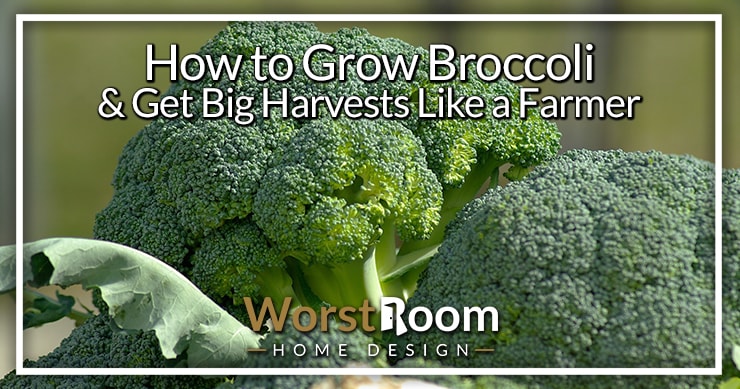
There's nothing particularly difficult in learning how to grow broccoli. The real challenge comes in the patience it takes to tend to your veggies until they're ready to harvest.
This green plant, also called the crown jewel of nutrition, is a cool-season crop. It loves the sun but grows best in the spring or fall season.
It's incredibly healthy and is a cole crop that's a great source of vitamin A, potassium, folic acid, fiber, and iron. And it keeps producing side shoots that'll keep coming for a few months after the initial harvest.
You already know broccoli is awesome or you wouldn't be here reading this. So let's cut to the chase and walk you through exactly how to grow broccoli.
How to Grow Broccoli
Before we begin, here's a quick trivia tip. Broccoli is a man-made invention! We believe it was around the 6th century BC during the Roman Empire that the earliest variations were cultivated in the Mediterranean area.
We're going to start from the beginning when you should prepare your soil before planting the seeds. We'll tell you when and how to do each step, all the way up to the moment of harvest. We'll also talk about some things to look out for, especially with pests, no matter the types of broccoli you're growing.
When to Plant Broccoli
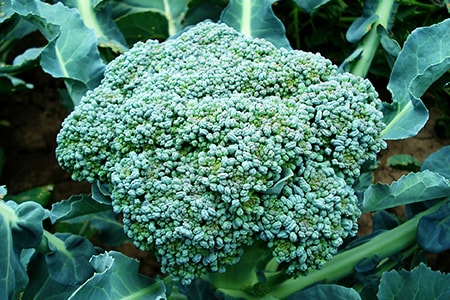
As mentioned, this is a cool season crop that must be planted in late winter or early spring. And it's to be harvested in spring or early summer when the temperatures are around 75 degrees Fahrenheit.
If you’re going for the spring planting calendar, start by planting the seed indoors about 5 to 6 weeks before the last frost. If you want your harvest to come in the late fall or early winter, plant it in mid or late summer.
Once the last frost passes, transplant the broccoli into the outdoors garden. You don't need to worry too much about hardening them by gradually introducing them to the wild. They're a hardy crop and can handle it. A few days of hardening is enough.
When the seedlings are 4 to 6 weeks old, harden them for about 3 days and transplant them into your garden. The broccoli will be ready for harvest in 55 to 85 days after transplanting and 70 to 100 days from the time they were just seeds.
How to Plant Broccoli
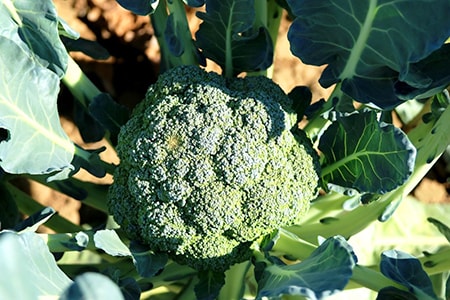
When it comes to a healthy harvest, this plant needs to be exposed to full sun for 6 to 8 hours every day. If that does not happen, the plant will have thin legs and a subpar head.
The seeds must be planted in moist and fertile soil. The pH level of the soil must be a bit acidic which is between a pH of 6 and 7.
If you want to increase the fertility of the broccoli plant, you can add 2 to 4 inches of compost and a thin layer of manure to the soil in early spring. Tilling that under is beneficial if you can do it.
If you are planting outdoors, sow the seeds about half an inch deep and keep them three inches apart from each other. When the seedlings grow about 2 or 3 inches tall, thin them to make sure the fully grown plants are about 12 to 20 inches apart.
If you're starting them indoors, take the seedlings outdoors when they are 4 to 6 weeks old and shoot out four or five leaves. It's a question of maturity and being established enough to survive the transition.
Plant them 12 to 20 inches apart in holes that are a bit deeper than the container in which you sowed the seeds. The rows need to be 3 feet apart to avoid growing plants with smaller heads. Give them plenty of water right after planting.
Now, if you have started the process of growing the broccoli in a container, remember that each of the seeds need an eight-inch container to grow healthily.
If you want to grow multiple plants in one container, they should be planted 18 inches apart. This plant is sensitive to heat. So, on a hot day, you can simply move the container into shade.
How Long Does it Take to Grow Broccoli?
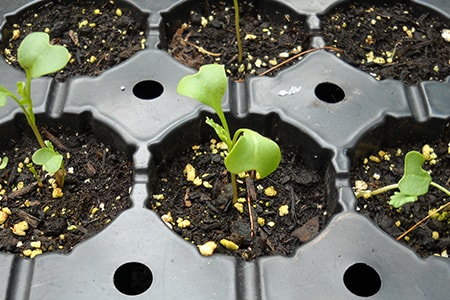
From the day of planting the broccoli seed, the plant will be mature and ready for harvest in 100 to 150 days. If grown from broccoli transplants, the time for harvest will arrive in 55 to 80 days.
How to Care for Broccoli
The soil in which you plant the broccoli seedlings must be kept moist throughout the growing season. This is a key task in how to grow broccoli. When the plants are mature enough, you can reduce the amount of water you give them.
And when you do water them, make sure it's at the base of the plant. Give well-aged compost to the sides of the plant while you are planting them in the garden and do it once again in the middle of the growing season.
Make sure there are no weeds in the bed of the plant. Also keep an eye out for cutworms, white and yellow moths, cabbage loopers, and imported cabbage worms among other types of worms, all of which tend to attack the plant.
If you do find these pests, you can just pick them out with your hand or spray some Bacillus thuringiensis on the plant.
This plant is also prone to diseases like yellows, clubroot, and mildew belonging to the cabbage family. To keep this from becoming a regular occurrence, rotate crops every year and plant varieties that are resistant to diseases.
The garden must also be free of debris so that the diseases are kept at bay. If you find infected plants, remove them from the garden immediately and completely, leaving behind no broken heads or leaves.
Broccoli Growing Tips
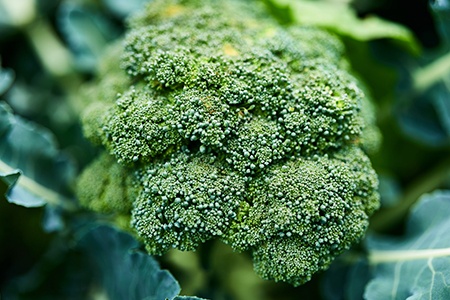
- When the seedlings are still indoors, make sure they get plenty of sunlight at a window.
- If the stamps are long, re-pot the seedlings deeper till the first leaves start to show and circle back to check on the lighting.
- Once the weather is free of frost, you can transplant the seedlings to your garden. Aim for this to be around the 4th to 6th week after planting the seeds.
- The plants must be hardened before you expose the seedlings to direct sunlight. This can be done across 3 days, adding a few hours of exposure each day.
- The plants must be placed 12 to 24 inches apart to give the central heads space to grow.
- Pick a location in the garden where the plant will get direct sunlight for 6 to 8 hours every day.
- Grow the plant in organic soil that is fertilized with compost and has a pH value between 6 and 7.
- Add a fertilizer that has a lot of nitrogen. It promotes the growth of leaves. Use something that has a lot of potassium and phosphorus to improve the development of bloom.
- Broccoli grows best in moist (not soggy) soil. So, make sure you water them regularly while ensuring the soil drains well.
- You might want to add mulch atop the soil to control the growth of weeds and retain moisture levels in the soil.
- It's best to pick a place in the garden where you haven't planted cabbage in at least four years. This reduces the chance of a disease outbreak in the crop.
Broccoli Temperature Range & Pests
Even though this is a cool-season crop, you mustn't leave them outside in freezing temperatures. Like everything else in life, growing broccoli is also about moderation.
If it's a little too cold outside, the plants may get chilling injuries which turns the buds to a purple color. It can also soften the head but you can still eat those as long as they haven't frozen and thawed multiple times.
To prevent these disasters, consider getting floating row covers which give an extra 4 to 8 degrees of warmth. You can also cover them with tunnels or a cold frame to boost temperatures by 10 to 30 degrees during the day.
These measures not only protect the plants in the cold but also help extend the season by up to four weeks. Be careful not to overheat them in this way during the summer.
How to Harvest Broccoli
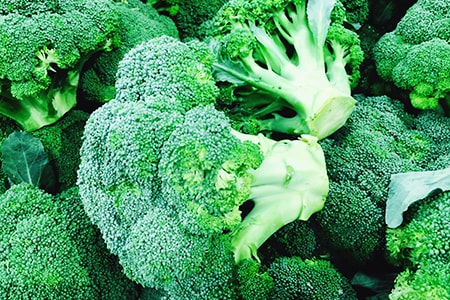
When it’s time to reap the benefits of your hard work, look for a flower head that forms right in the middle of the plant. Keep an eye out for it every day as harvest time approaches. Harvesting at the right time is the final step of how to grow broccoli.
The best time to harvest broccoli is when the buds are tiny and closed tightly. If you notice swelling or yellowness on the flower petals, cut the head immediately regardless of their size.
The broccoli will be ready for harvesting in 55 to 85 days after transplanting them outdoors and 70 to 100 days from the time you planted them as seeds.
Once the main head is chopped off, leave the plant and let it grow side shoots in the axil of the leaf. If the head is smaller than the ones you have been buying, that's because the store-bought stuff was probably pampered a lot and was grown under the best of climatic conditions as compared to your little guy.
If that doesn’t make you happy, consider growing it again in fall and you'll see bigger heads than you did in spring. For that, you need to plant them in late summer.
That's How to Grow Broccoli!
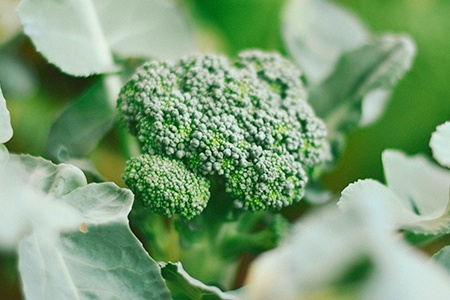
This green plant grows really well outdoors in a temperature range of 65 to 70 degrees Fahrenheit. About three weeks after transplanting the seedlings, you should use a nitrogen fertilizer on it.
Make sure the soil is moist with regular watering. If you live in a drought region, make sure you do it even more diligently.
Enough water can be defined as one to one and a half inches of water every week. Don’t water them on the head because that might lead to rotting. Also, broccoli roots are very shallow. So, care must be taken that they be left undisturbed.
Weeds must be controlled at all costs with the help of mulch. This also helps keep the temperature under control. Also remember to check if you need to use row covers or tunnels to keep pests at bay and control temperatures when it is excessively cold outside.
You must actively feed and water the plant after the first broccoli head has been harvested to make sure a healthy second head shows up. If the bottom or top leaves turn yellow, harvest the head right away. Also remember that mornings are the best time to harvest the plant before the heat of the day gets to it.
This is not the easiest plant to care for if you are a first-time gardener. But you will learn a lot in the process of caring for it that you can use when you grow other plants. And that's how to brow broccoli!



